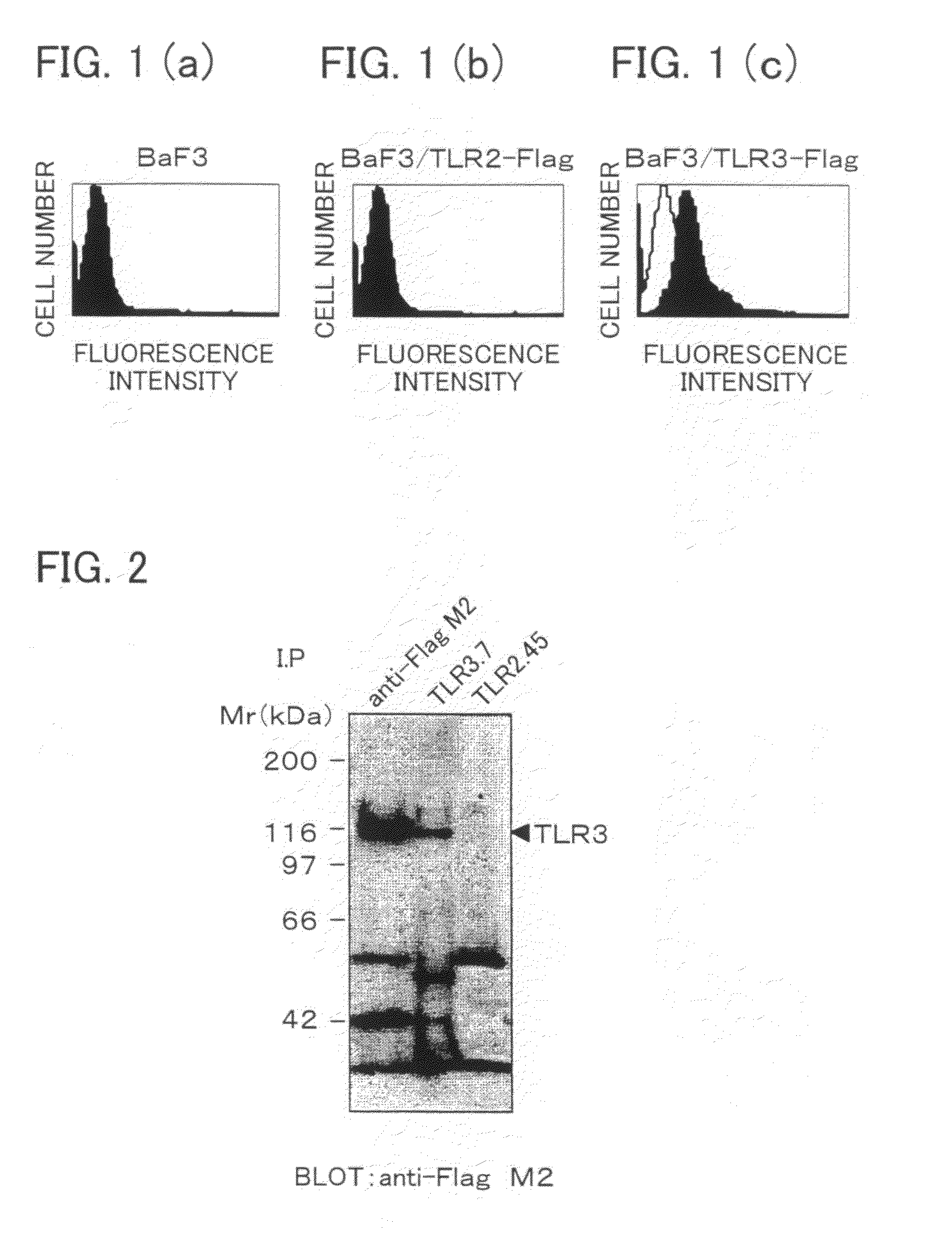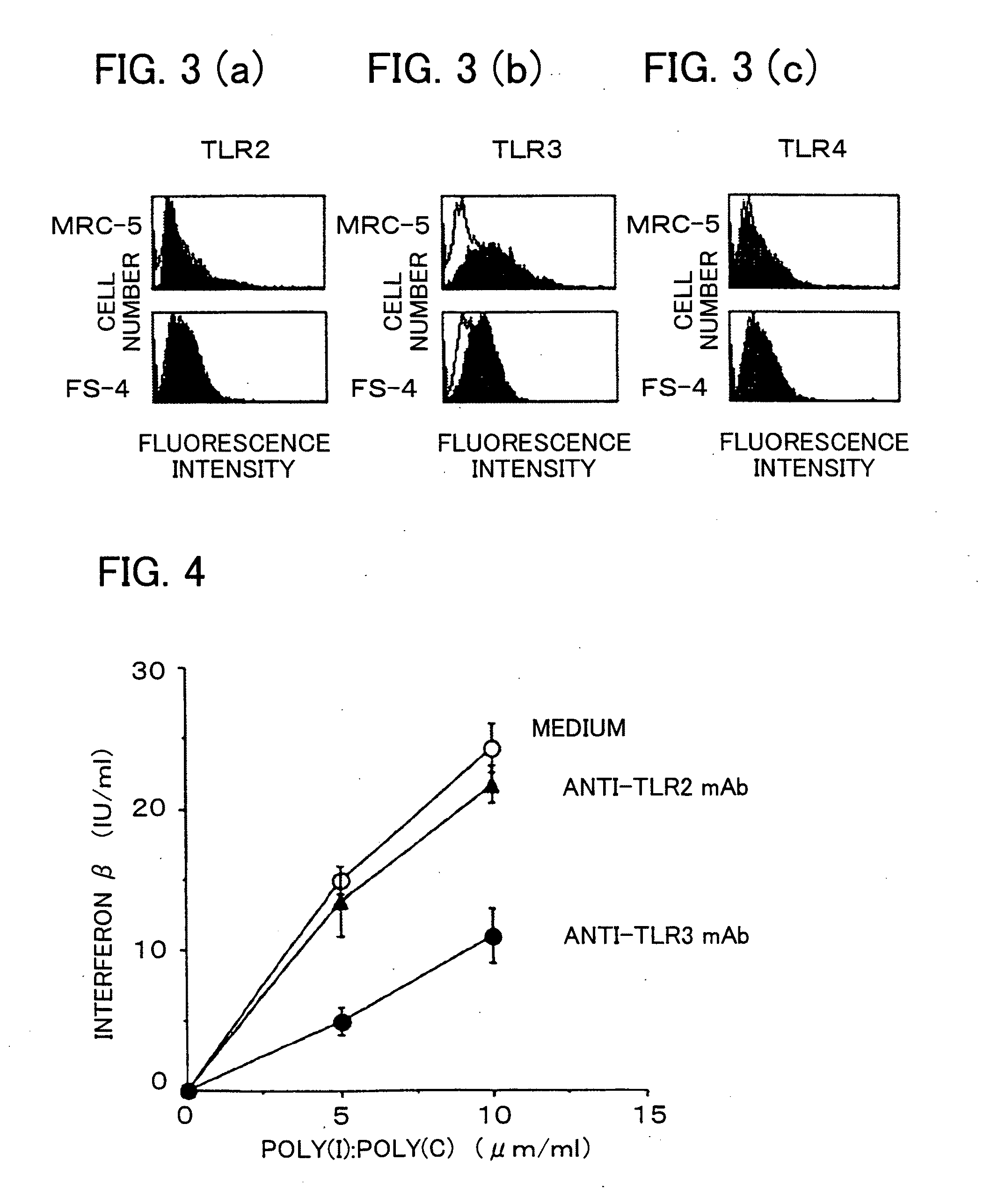Antibody and inhibitor, and transfection method or kit using them
a technology which is applied in the field of antibody and inhibitor, and transfection methods or kits using them, can solve the problems of not being able to achieve the improvement of infection efficiency and not yet being clarified, and achieve the effects of improving the infection efficiency of the virus vector, enhancing the infection efficiency, and suppressing the immune respons
- Summary
- Abstract
- Description
- Claims
- Application Information
AI Technical Summary
Benefits of technology
Problems solved by technology
Method used
Image
Examples
example 1
[0065]In order to identify ligands for TLR3 by checking expression of TLR3 protein level and localization of TLR3 in terms of protein, the monoclonal antibody against human TLR3 was generated as the inhibitor according to the present invention.
[0066]That is, first, BALB / c mice were immunized with Ba / F3 cells stably expressing Flag-tagged (fluorescence-tagged) human TLR3, and then, spleen cells of the mice were fused with NS-1 myeloma cells so as to obtain an antibody producing hybridoma. From the antibody producing hybridoma, a monoclonal antibody against TLR3 was chosen by cell-surface staining of the same TLR3 transfectants used for immunization, so as to establish a monoclonal antibody against TLR3. The monoclonal antibody was named as TLR3.7. In the monoclonal antibody TLR3.7, immunoglobulin subclass was IgG1 and an L-chain was type κ.
[0067]Further, as a control, a monoclonal antibody against TLR2 was generated in the same manner as in the monoclonal antibody TLR3.7. The monoclo...
PUM
| Property | Measurement | Unit |
|---|---|---|
| molecular mass | aaaaa | aaaaa |
| concentrations | aaaaa | aaaaa |
| concentration | aaaaa | aaaaa |
Abstract
Description
Claims
Application Information
 Login to View More
Login to View More - R&D
- Intellectual Property
- Life Sciences
- Materials
- Tech Scout
- Unparalleled Data Quality
- Higher Quality Content
- 60% Fewer Hallucinations
Browse by: Latest US Patents, China's latest patents, Technical Efficacy Thesaurus, Application Domain, Technology Topic, Popular Technical Reports.
© 2025 PatSnap. All rights reserved.Legal|Privacy policy|Modern Slavery Act Transparency Statement|Sitemap|About US| Contact US: help@patsnap.com



